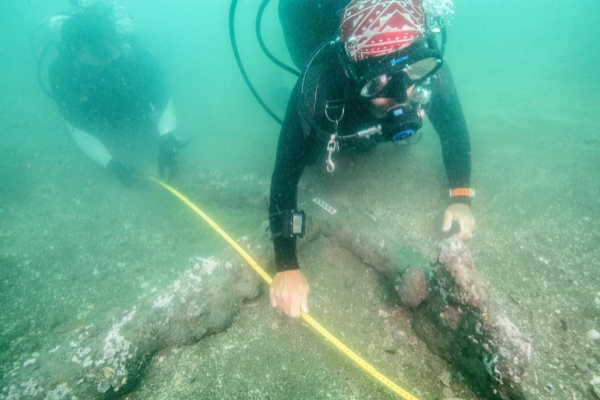Mexican researchers discovered two iron anchors off the coast of Veracru z, presumably in the place where Spanish conqueror Hernán Cortés sank their ships 500 years ago , the National Institute of Anthropology and History (INAH) of Mexico reported Monday.
Due to their construction and manufacturing, the anchors would be linked to the 16th century and their orientation would show a port logic , which could even be associated with the location of the Cortes fleet, the INAH said in a statement.
The institution explained that archaeologists who work together with foreign specialists managed to locate two iron anchors in an exploration in the area of the Villa Rica de la Vera Cruz , current city of Veracruz, on the shores of the Gulf of Mexico.
"Their characteristics link them to the 16th century and their alignment in the southwest direction , could even indicate that they followed a port dynamic in their placement on the seabed," the agency's statement added.
In addition, both objects were added to a first anchor discovered in 2018 , whose laboratory study has proven that the wood of its stocks belongs to a tree of the Cantabrian cornice of Spain that was alive in the second half of the fifteenth century .
The head of the Underwater Archeology Branch (SAS) of INAH, Roberto Junco, who directs the project together with underwater archaeologists Christopher Horrell, Melanie Damour and Frederick Hanselmann, said the two new anchors "were registered 300 meters north of the previously found . "
"They are larger than that: 2 meters long and 66 centimeters between the tips of his arms," he added.
The most voluminous anchor of the set found now measures 3.68 meters long and has a width of 1.55 meters between its tips, while the remaining one is 2.60 long by 1.43 meters from one end to the other of its arms.
Junco explained that, unlike the object analyzed in 2018, the two anchors located this year did not retain their wooden stocks .
However, in both of them their tongues are visible, a pair of bumps on their cane, at the height at which the stocks adjusted, running parallel to each arm, a typical feature of the manufacture of the anchors of the sixteenth century.
Southwest alignment
The researchers pointed out that after 1519 and until the 19th century, Villa Rica de la Vera Cruz, the second Spanish city hall in continental America, became a very active port for navigation.
"It is not clear if all three anchors belong to the same historical moment, but their alignment to the southwest coincides with the logic of Villa Rica as a port that protects ships from the north and northwest winds," Junco said.
"The Conquest of Mexico was a seminal event in human history, and these wrecks, if we can find them, will be symbols of the cultural collision that led to what is now the West, geopolitical and socially speaking," Hanselmann said.
The anchors are in "a good state of conservation" , thanks to the same sediment that protected them five centuries.
Junco and Horrell announced that, in the next exploration, the group will focus on another 15 signs of possible anchors, as they follow the same alignment as the three historical vestiges located so far.
"If they are, it would reaffirm the hypothesis that we are facing the port of what was Villa Rica in its short duration, or the other assumption, that we have located the point where the Cortés fleet sank and we could begin to assemble the puzzles from where to look for other types of objects such as wooden hulls, "Junco concluded.
Cortes arrived on the shores of Villa Rica with a fleet of 11 ships, of which 10 were sunk by orders of the conqueror to make it clear to his men that there was no turning back in his expedition.
According to the criteria of The Trust Project
Know more- Mexico
- America
- science
- history
- Spain

